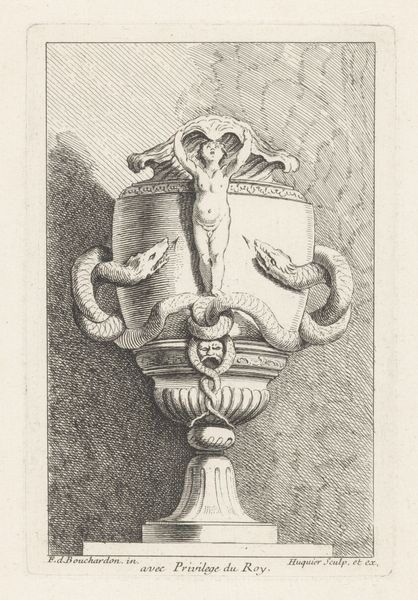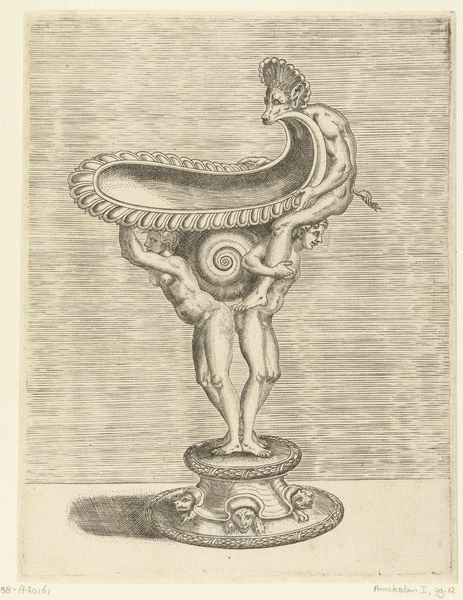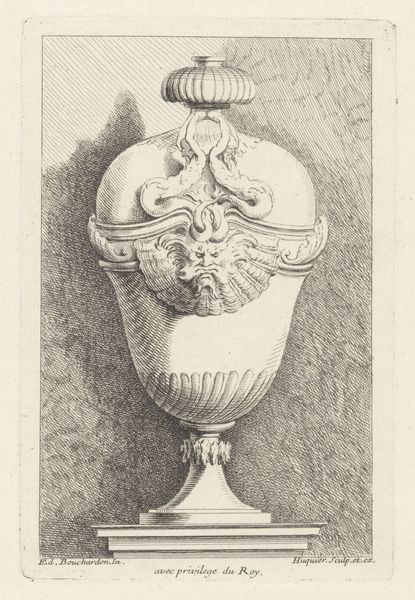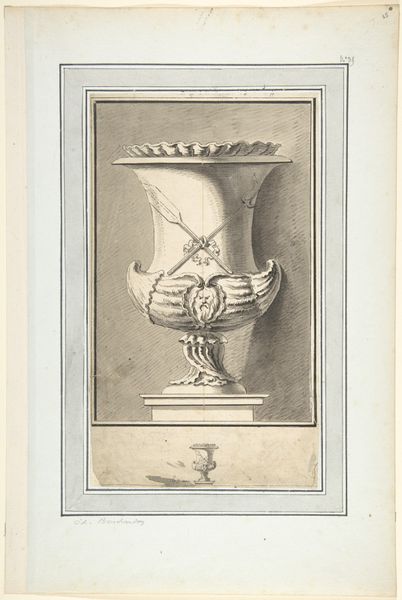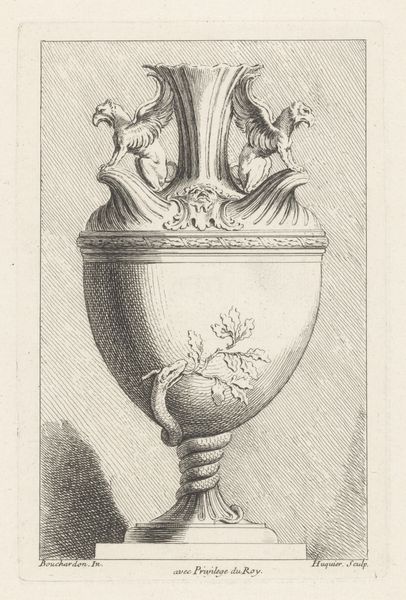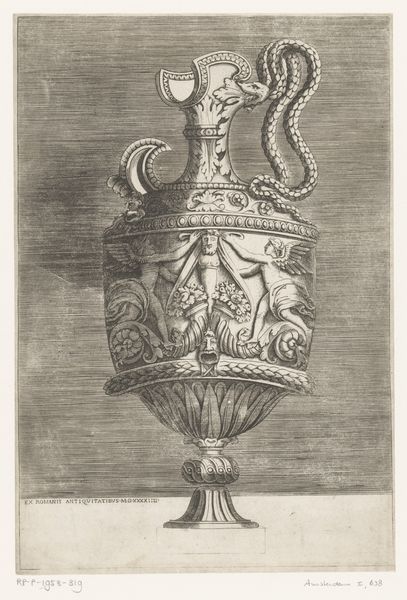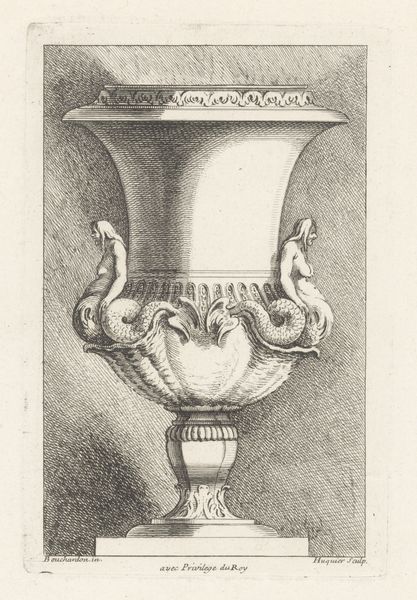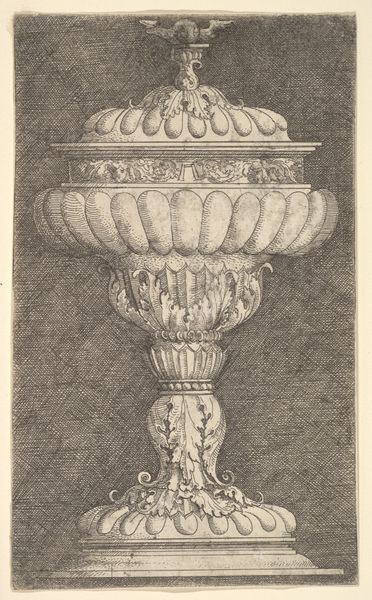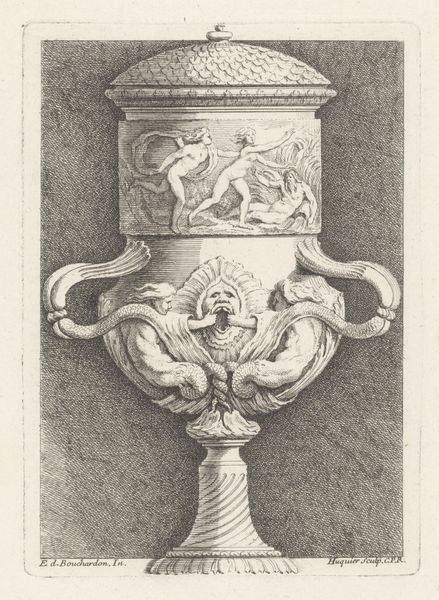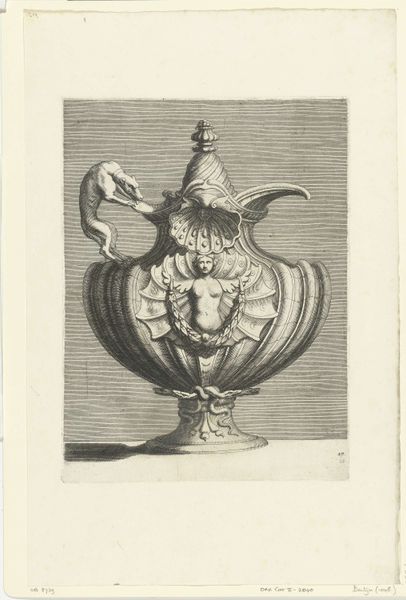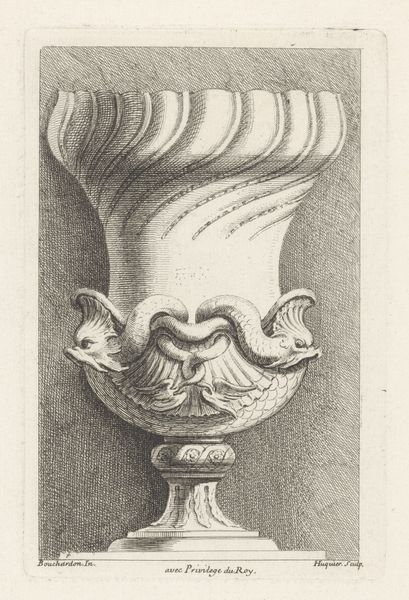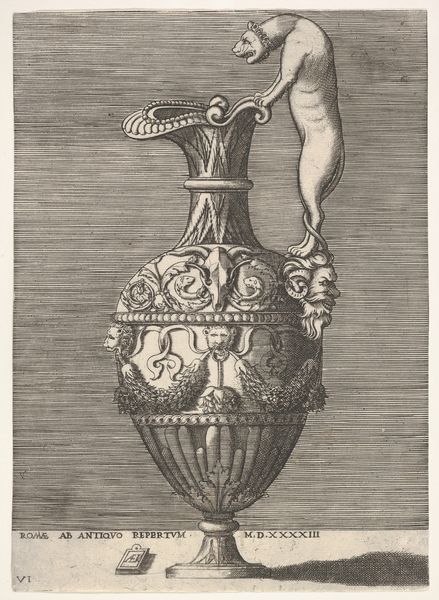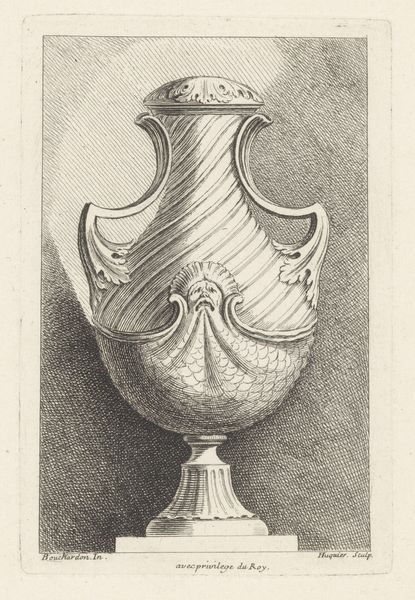
print, engraving
#
baroque
# print
#
old engraving style
#
decorative-art
#
engraving
Dimensions: height 198 mm, width 130 mm
Copyright: Rijks Museum: Open Domain
Curator: This engraving, entitled "Vaas met drietanden", which translates to Vase with Tridents, was created between 1729 and 1737. Gabriel Huquier is the artist and you can find this print in the Rijksmuseum's collection. Editor: It has an air of solemn, stylized grandeur. The level of detail is astounding, the texture rendered solely through these intricate lines! The overall impact is quite impressive despite the limited grayscale palette. Curator: Considering the decorative-art context of its Baroque style, think of the possible lives this engraving would have lived! How might it have circulated through various hands and spaces, perhaps reproduced for a broader audience? The symbolism also evokes potent questions, not just in what the vase *represents* but for *whom* and toward what end? Editor: The engraving process itself is crucial. The creation of multiple identical copies was labor-intensive, requiring meticulous hand work and the use of metal plates to transfer the image. These methods allowed for the democratization of design. I’d be curious to know about the tools and labor of this engraver. Curator: Agreed, we should dive more deeply into the lives and possible politics of those making this image, or what they had in mind as potential consumer fantasies about wealth. Thinking of decorative vases from our contemporary lens, and their continued associations with luxury and status. This is just as valid as pondering its past reception. Editor: Right, and while those high associations were certainly baked in at the time, engravings were produced in multiples and circulated beyond the upper classes. Their purpose was for consumption, to fill homes, decorate walls and furniture, and display design ideas! They became the very seeds from which further making sprang. Curator: Well said. Contemplating it, my gaze drifts back and forth across the trident symbols, landing on that somewhat comical face embedded within the shells that form the base. Editor: Yes! And my eye returns to those shells too. Once living organisms now rendered stone. The way Huquier meticulously captures that surface makes the art truly alive. Curator: A final thought for me would be tracing the vase's transition—from conceptual form, through production in varied media, to becoming a cultural symbol that resonates today. Editor: Indeed. A great look at the piece.
Comments
No comments
Be the first to comment and join the conversation on the ultimate creative platform.
